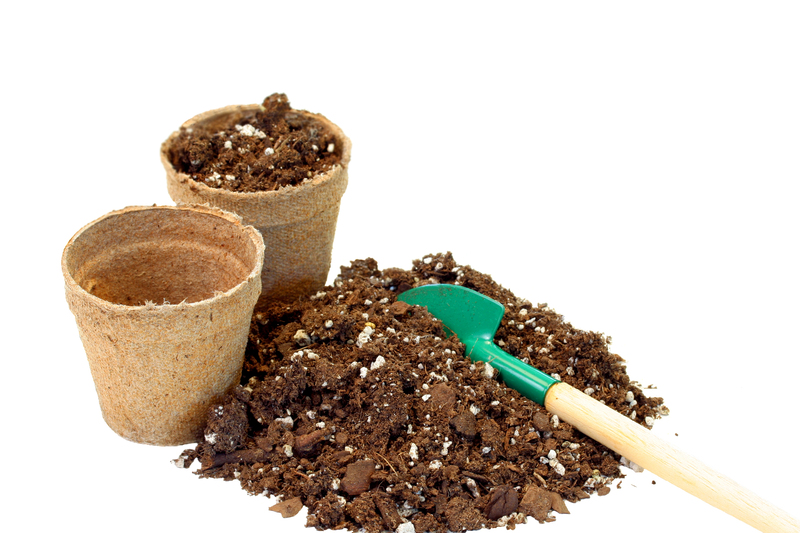Transform a Neglected Garden: First Things First
Posted on 18/06/2025
Transform a Neglected Garden: First Things First
Is your outdoor space looking bedraggled, overgrown, or forgotten? Transforming a neglected garden can be immensely rewarding, but knowing where to start is crucial. With a focused approach and practical steps, you can reclaim your garden and nurture it back to life. In this in-depth guide, you'll discover everything you need to know about garden transformation, from the very first tasks to the essentials of creating a flourishing green retreat.
Assess the State of Your Neglected Garden
Before you pick up a trowel or secateurs, take some time to assess the current condition of your outdoor space. The initial evaluation is one of the most important steps in the process of reviving a neglected garden.
Walkthrough and Observe
- Make notes of damaged structures, overgrown plants, weed infestations, and the state of the soil.
- Take photographs from different angles. This visual record is invaluable for tracking progress and planning.
- Identify any features worth preserving or revitalizing, such as mature trees, shrubs, or underpinning hardscaping.
Safety First: Clear Hazards
Before diving into gardening tasks, address any immediate hazards:
- Remove broken glass, rusted metal, or sharp objects.
- Stabilize loose paving stones or unstable fencing.
- Wear gloves, boots, and protective clothing--safety is essential in a neglected garden.

Develop a Transformation Plan
Without a clear roadmap, it's easy to feel overwhelmed by a neglected garden overhaul. Take a moment to outline your goals and prioritize tasks.
Set Clear Objectives
- Do you want a flower-filled retreat, wildlife-friendly haven, low-maintenance space, or vegetable patch?
- Assess how much time, energy, and budget you can realistically invest.
- Plan for both short-term tidying and long-term improvements.
Draw Up a Simple Map
Creating a rough sketch of your garden layout will help you visualize potential changes. Mark pathways, borders, existing plants, and key areas for improvement.
Tools and Supplies: Gather Essentials
Having the right tools on hand makes transforming your neglected garden more efficient and enjoyable.
- Basic hand tools: trowel, fork, pruners, loppers, rake.
- Sturdy lawn mower or strimmer (for tackling overgrown grass).
- Wheelbarrow, heavy-duty trash bags, and compost bins.
- Compost or organic matter for soil improvement.
- Protective gear: gloves, boots, and safety glasses.
Initial Cleanup: Creating a Blank Canvas
The first physical step in garden transformation is clearing away debris and overgrowth. This process not only improves appearance but brings hidden problems to light.
Remove Rubbish and Weeds
- Bag up litter, broken items, and dead plant material.
- Remember to recycle or compost what you can.
- Pull out weeds, roots and all, to prevent regrowth. Pay especial attention to invasive species, as they can quickly take over again.
Tame Overgrown Grass and Shrubs
- Cut lawns to a manageable height in stages--avoid scalping long grass in one go.
- Trim shrubs and hedges, removing dead or diseased wood first.
- If trees are overgrown or hazardous, consult a professional arborist before proceeding.
Cleaning Hard Surfaces
- Sweep or power wash patios, decking, and pathways to remove moss, algae, and dirt.
- Check for repairs needed on walls, steps, or fencing.
Soil Revival: The Foundation of Every Garden
Good soil is the backbone of a thriving garden. Neglected plots often suffer from compacted, barren, or nutrient-poor soils. Here's how to bring it back to life:
Test and Amend the Soil
- Use a simple soil testing kit to check pH and basic fertility.
- Add organic matter, such as compost, well-rotted manure, or leaf mold, to boost structure and nutrients.
- Avoid chemical fertilizers at this early stage; focus instead on biological health.
Aerate and Mulch
- Break up compacted earth with a fork or aerator.
- Apply a thick mulch layer to retain moisture, suppress weeds, and further enrich the soil.
Identify and Rescue Valuable Plants
Amid the chaos, there are often hidden gems--established shrubs, perennials, or self-seeded plants worth saving. Part of transforming a neglected garden involves distinguishing between what to keep and what to remove.
- Look for healthy, established plants that suit your long-term vision.
- Prune back damaged growth and clear space around survivors to help them recover.
- Transplant misplaced seedlings or perennials if needed; water them thoroughly.
Plan for Problem Areas
Neglected gardens often harbor issues such as poor drainage, persistent weeds, or shady corners. Tackle these early to ensure lasting results.
Address Drainage Issues
- Dig small drainage channels if water pools on the surface.
- Add organic matter to clay soils or install gravel in soggy spots.
- Consider raised beds for growing in poorly drained or contaminated areas.
Deal with Weedy Patches
- For stubborn weed infestations, cover the area with black plastic or cardboard for several weeks to starve light-sensitive plants.
- Hand-remove tough perennials and dispose of roots away from compost.
Establish a Maintenance Routine
After the initial push, regular maintenance is crucial for sustaining your garden's transformation.
The Power of Little and Often
- Spend a few minutes each day or week on weeding, deadheading, and tidying to prevent overwhelm.
- Check for pests, diseases, or new hazards regularly and act quickly.
- Mulch annually to suppress weeds and feed the soil.
Reimagine and Replant: Begin Building Your Dream Garden
With the hard graft done, you can start reimagining your outdoor space. Honor your initial objectives and select plants, structures, and features that fulfill your vision.
Choose the Right Plants
- Pick low-maintenance, robust species adapted to local conditions for continued ease-of-care.
- Group plants by water, light, and soil needs for best results.
- Don't rush--plant in stages and observe how your garden evolves through the seasons.
Add Creative Features
- Install or repair edging to define borders and paths.
- Consider focal points: benches, birdbaths, sculptures, or planters.
- Create wildlife-friendly habitats with log piles, ponds, or native blooms.
Common Mistakes to Avoid When Transforming a Neglected Garden
- Doing too much at once: Break the work into manageable stages to avoid burnout.
- Neglecting soil health: Don't skip soil improvement--plants rely on good foundations.
- Ignoring garden boundaries: Secure fences and gates early to protect your space.
- Overplanting: Allow for future growth and easy maintenance access.
- Forgetting to plan for wildlife: A vibrant, living garden is resilient and enjoyable.

Expert Tips for a Lasting Garden Transformation
- Patience pays off: A beautiful garden takes time--enjoy the process and celebrate small wins.
- Use mulch wisely: Organic mulches improve soil and reduce weeding effort.
- Start a compost pile: Recycling garden waste enriches soil and closes the sustainability loop.
- Join a gardening community: Online forums or local clubs offer valuable advice and encouragement.
- Trust your instincts: Your garden should reflect your tastes and needs.
Conclusion: Start Your Garden Revival Journey Today
Undertaking the transformation of a neglected garden is a journey of discovery, perseverance, and creativity. Begin with a thoughtful assessment and systematic cleanup, enrich the soil, and nurture plants that reflect your goals. As you progress, the space will not only become more beautiful, but also easier to maintain and more enjoyable for years to come.
Ready to transform your garden? Start today with these practical first steps, and watch your neglected yard become a flourishing oasis of color, life, and relaxation.
- Prioritize assessment, safety, and planning for a strong start.
- Embrace an ongoing maintenance routine--and celebrate each milestone!
- Most importantly, make your garden journey unique and enjoyable.
With persistence and the right know-how, you can turn any neglected plot into the garden of your dreams!



